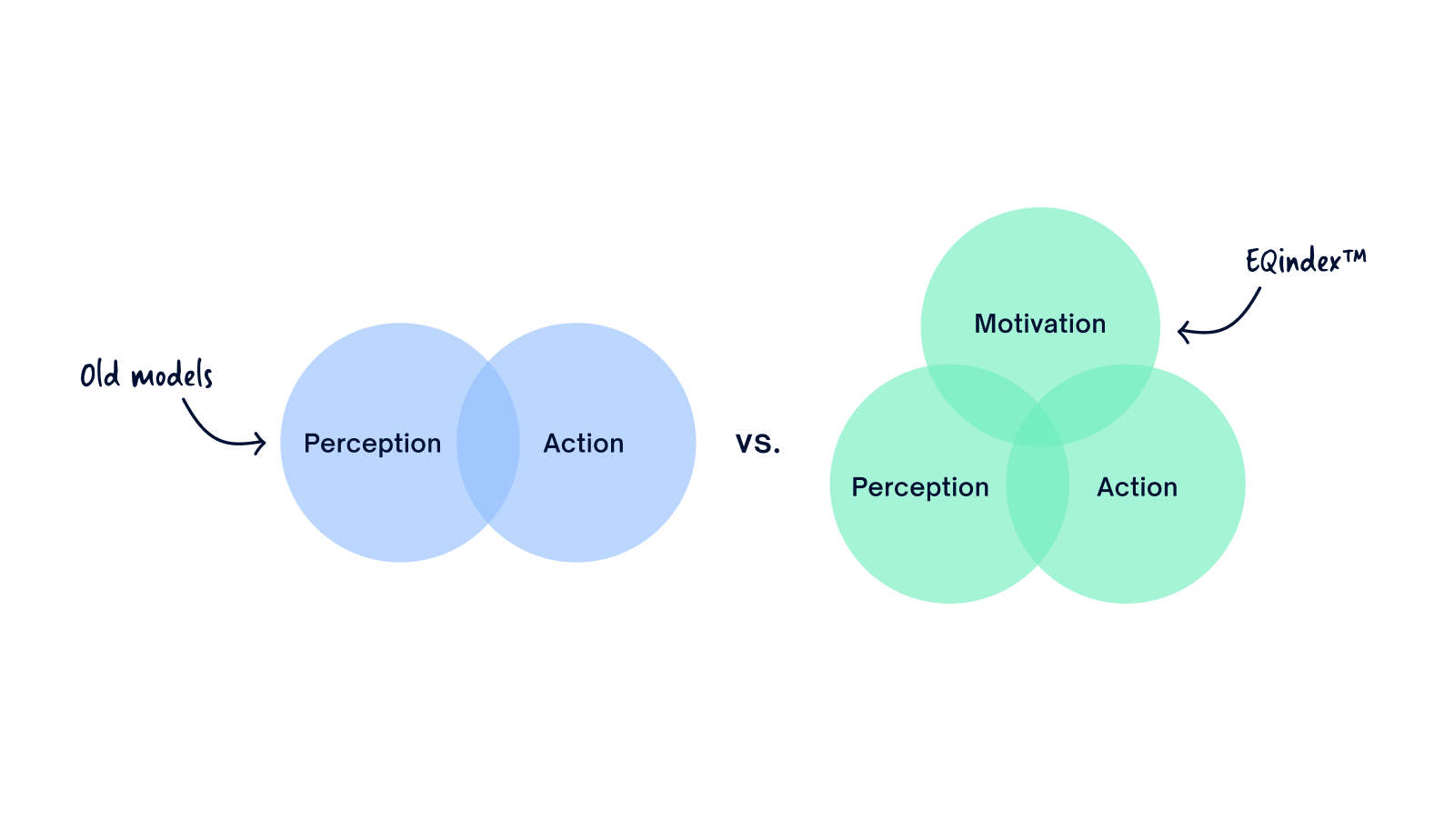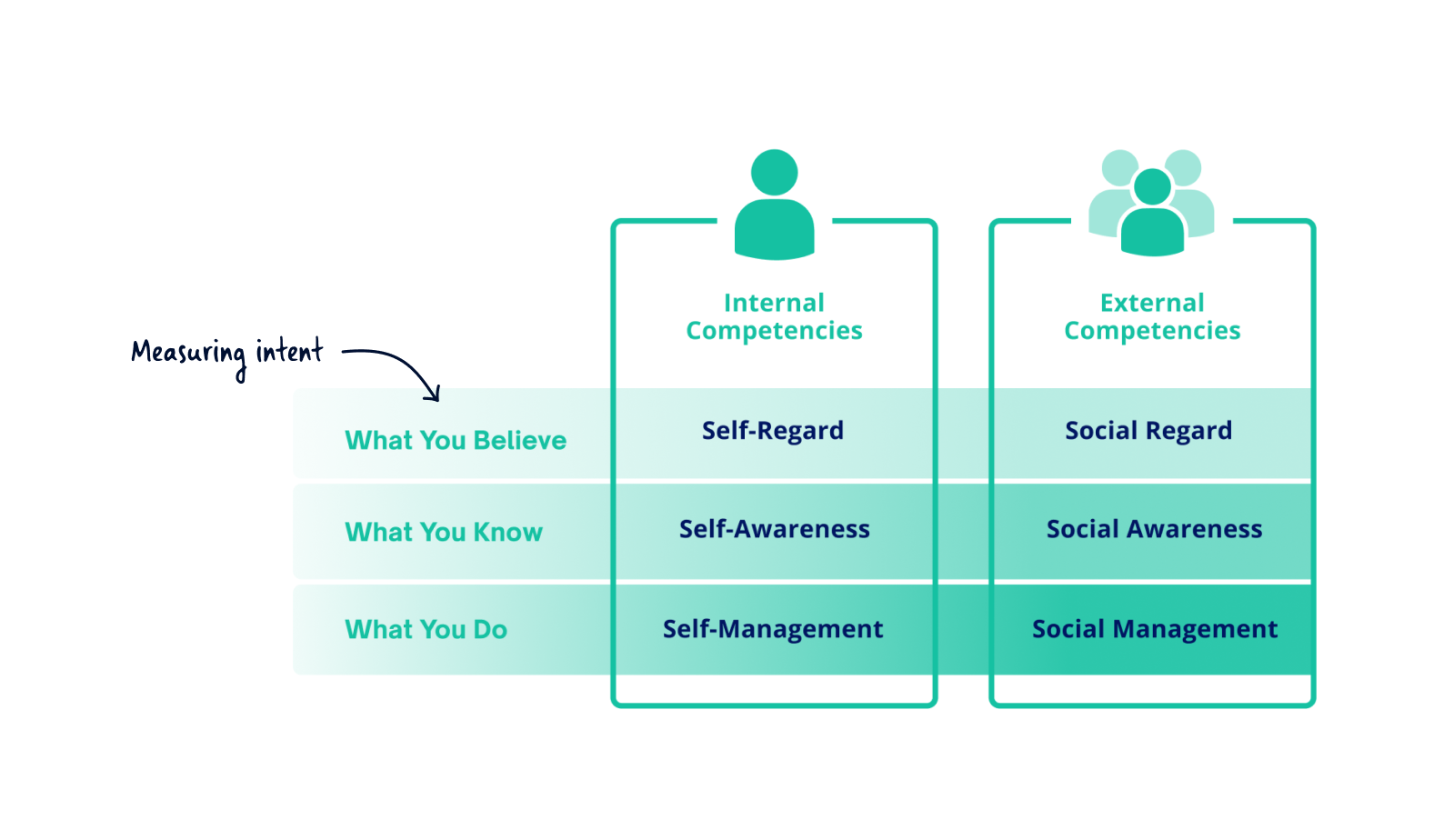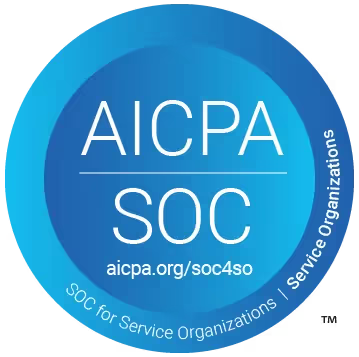Tools for Measuring Emotional Intelligence in Your Workforce
In today's business landscape, technical expertise alone is no longer the golden ticket to success. Leaders and organizations that thrive understand the immense value of a hidden yet potent weapon: emotional intelligence (EQ). But knowing the power of EQ is only half the battle. The real challenge lies in accurately measuring this multifaceted quality within your workforce.
This post delves into the practical realm of measuring emotional intelligence, providing you with the tools and insights to unlock the hidden potential within your teams.
Why Measure EQ? The Business Case for Quantifying the Invisible
Before diving into the assessment toolbox, let's solidify the "why." Why invest time and resources in measuring the emotional intelligence of your team? The answer lies in the undeniable impact EQ has on organizational success, as backed by compelling research:
- Enhanced Team Performance: Studies by the Center for Creative Leadership indicate that teams with high levels of EQ are 20% more productive and 40% more profitable than those with lower EQ. Imagine a vibrant team where members effectively navigate disagreements, collaborate seamlessly, and celebrate each other's successes. This is the power of emotionally intelligent teams.
- Reduced Conflict and Turnover: Emotionally intelligent leaders and team members foster environments of trust and understanding, leading to lower conflict rates and improved employee retention. A Harvard Business Review study revealed that companies with employees scoring high on EQ had a 90% employee retention rate, compared to only 67% for companies with lower EQ scores. This translates to significant cost savings and a more talented, engaged workforce.
- Stronger Customer Relationships: Leaders who can empathize and connect with customers build stronger relationships, driving customer loyalty and satisfaction. Forbes highlighted a study showing that emotionally intelligent leaders have customer retention rates twice as high as those with lower EQ. In today's customer-centric world, this translates to a competitive edge and sustainable growth.
These are just a few examples of the tangible benefits that underscore the importance of measuring EQ within your organization.
Exploring the Toolbox: Common EQ Assessment Methods
Now, let's crack open the toolbox and explore the diverse range of methods available for measuring EQ:
- Self-Report Measures: These questionnaires assess individuals' perceptions of their own emotional intelligence. Imagine delving into a self-report where team members identify their strengths and weaknesses in self-awareness, self-regulation, social awareness, and relationship management. This provides a valuable starting point for individual development.
- Ability Measures: Moving beyond self-perception, these tests directly assess emotional intelligence skills through tasks and simulations. This provides objective data on real-world skills.
- 360-Degree Feedback: This multi-dimensional approach combines self-assessment with feedback from colleagues, supervisors, and even direct reports. Imagine a comprehensive picture emerging from colleagues' observations of an individual's communication style, conflict resolution skills, and ability to manage emotions in challenging situations. This holistic view helps identify blind spots and areas for improvement.
- Behavioral Observation: Trained observers monitor individuals' behavior in real-world situations, assessing their emotional skills in action. Imagine leadership development programs incorporating observed interactions with team members and clients, providing valuable insights into an individual's leadership style and emotional agility. This practical approach complements other assessment methods.
Choosing the right tool depends on various factors, including your specific needs, budget, and desired level of depth. Consider involving your HR team and external consultants to identify the most appropriate assessment method for your organization.
What's Missing: The 6 Domains of Emotional Intelligence
In the beginning, emotional intelligence was an amorphous idea of social interaction. People were either good at it, or not good at it. Luckily, we've gotten better at breaking it down into its component parts, and this has paved the way for EQ measurement. You may be familiar with these common models and their component parts used to measure EQ worldwide:
Goleman (Self-awareness, self-management, social awareness, relationship management)
MSCEIT (Perceiving emotions, using emotions, understanding emotions, managing emotions)
EQi 2.0 (Self-perception, self-expression, self-regulation, empathy, social skills)
There is a key problem with these popular emotional intelligence frameworks: They don’t acknowledge that behavior is merely a symptom of your emotional intelligence, not the source. Let’s talk about what happens when we don’t measure the intent behind our behavior.
Behavior is Symptomatic
Behavior doesn’t just exist, it’s driven by a person’s intent and motivations. In other words, how you think about yourself and others has a profound influence on how you interact with those around you. If we don't account for the fundamental beliefs a person has about themselves and others, we can easily assign high emotional intelligence scores to those with manipulative tendencies. This dark side of charisma (or dark side of emotional intelligence) can let destructive leaders slip through the cracks in both self- and multi-rater assessments.

How do we solve for this gap? Remember, your EQ determines your ability to interact effectively with other humans. Does that ability start with the behavior itself? No. Your perceptions and actions are merely lag indicators of what precedes them, your motivations. This isn’t to say that measuring behavior isn’t an important aspect of measuring emotional intelligence. But to get the EQ full picture, we need to measure the intent behind the perception and action. Frameworks that can’t account for motivation are broken from the get-go.
The 6 Domains of Emotional Intelligence
Emotional intelligence consists of three internal and three external domains that act as companions: self-regard and social-regard, self-awareness and social awareness, self-management and social management.

The six domains of the EQindex™ framework address different aspects of emotional intelligence, what you believe (the regard domains), what you know (the awareness domains), and what you do (the management domains).
What You Believe: Self- and Social Regard
These companion domains refer to your beliefs about yourself and others and the intent you bring to social interactions. To put it simply, what are your motivations? As emotional intelligence’s lead indicator, what you believe truly shapes how you show up in the world. Let’s talk about these companion domains, self-regard and social regard. While you read, notice how self-regard and social regard become a “prism of intent” through which we perceive and interact with others. Can you see how low self- and social regard could lead to ineffective and even harmful behavior and interactions?
We can boil down self-regard to four distinct things:
- Respecting yourself
- Having confidence in your abilities
- Believing in your own self-worth
- Knowing that you matter and have inherent value
People with high self-regard develop better coping skills to adapt and respond to the challenges of life. They have the courage and confidence to reach their potential by resisting the opinions, criticisms, and limitations that others place on them. They can lead and influence others because they’re secure and accepting of who they are.
We can boil down social regard to five distinct things:
- Genuine concern for others.
- Respect for others.
- Appreciation for differences.
- Faith in the goodness and capacity of people.
- Empathy for others.
Social regard enables deeper connection. It counters cynicism by reinforcing belief in human goodness. You can’t underestimate the power of the benefit of the doubt to encourage effective interaction. People are more willing to trust and open up when they feel genuinely cared for, leading with empathy inspires more kindness, and cooperative goodwill builds cohesion and inclusion.
What You Know: Self- and Social Awareness
These companion domains refer to your understanding and awareness of your own thoughts, feelings, and behavior, as well as the thoughts, feelings, and behavior of those around you. How accurate and useful is your perception of yourself and the world around you? Your ability to perceive the world around you affects how you interact in it. Let’s talk about your EQ as it relates to self- and social awareness.
What do you know about yourself? We can boil down self-awareness to four distinct things:
- Recognition of your personality, disposition, and temperament
- Perception of your behavior and interactions with others
- Awareness of your motives, beliefs, and values
- Consciousness of your own feelings and desires
Self-awareness is an acquired skill. It depends primarily on personal honesty, effort, and a willingness to make ongoing, small self-corrections. This type of humility will drastically improve your interactions. Without self-awareness, it’s impossible to improve yourself because you don’t know where you are.
What do can you perceive about yourself and others? Social awareness is five distinct things:
- Recognition and understanding the emotions of others
- Awareness of social dynamics around you
- Interpreting the intents and desires of others
- Perceiving the mood and morale of the social environment
Social awareness allows you to interpret human dynamics accurately and respond constructively. People with high social awareness have the skills to build and sustain strong relationships and collaborate with others effectively. They have a greater appreciation for others and their contributions, and have a higher tendency towards inclusivity.
What You Do: Self- and Social Management
These companion domains refer to the behavior and skills you bring to social interactions. They represent the culminating domains that determine your overall interpersonal effectiveness. How you interact determines your overall interpersonal effectiveness. Let’s talk about your EQ as it relates to self- and social management.
We can boil down self-management to four things:
- Controlling your emotions, especially under stress
- Showing restraint over your impulses
- Mastering your personal will
- Disciplining desires and appetites
Self-management is a pattern of personal and professional success. All meaningful long-term goals require self-management in order to sustain effort and overcome challenges along the way. It’s the power to endure the delay of rewards as you continue to give effort to something that will eventually pay off. Self-management allows you to preserve and strengthen relationships in the midst of stress and succeed in a crisis situation without harming others.
Decoding the Data: Making Sense of the Metrics
Once the assessments are complete, the real work begins – interpreting the data! Remember, EQ is not a singular score, but a complex interplay of various skill sets. Look beyond single-dimension interpretations and focus on understanding the strengths and weaknesses revealed across different EI competencies. For example, analyzing an individual's self-awareness score alongside their self-regulation score can provide valuable insights into their ability to recognize and manage their emotions effectively.
This is where partnering with experienced professionals who specialize in EQ assessment and development becomes invaluable. They can help you navigate the data, identify key insights, and translate them into actionable plans for individual and team development. Imagine partnering with an EQ coach who helps team members understand their personal profiles, set specific goals for emotional intelligence development, and provide personalized feedback and coaching strategies. This individualized approach empowers team members to leverage their strengths and address their weaknesses, ultimately boosting their overall emotional intelligence and contributing to a more emotionally intelligent organization.
Beyond the Numbers: Cultivating a Culture of EQ
Measuring EQ is not a one-and-done endeavor. It's the first step in building a culture where emotional intelligence is valued, nurtured, and continuously developed. Here are some actionable steps to integrate EQ into your organizational fabric:
- Leadership Development Programs: Equip your leaders with the tools and skills to strengthen their own EQ and effectively champion an emotionally intelligent culture within their teams. Imagine leadership workshops focused on self-awareness, empathy, and effective communication, empowering leaders to become role models and coaches for their teams.
- Skill-Building Workshops: Provide training opportunities for all employees to develop their emotional intelligence competencies. Focus on self-awareness, communication skills, conflict resolution, and empathy. Imagine interactive workshops where team members learn to identify their triggers, practice active listening, and navigate disagreements constructively. This builds a foundation for emotionally intelligent interactions across the organization.
- Open and Honest Communication: Foster a safe and supportive environment where employees feel comfortable expressing their emotions, providing feedback, and engaging in constructive conflict resolution. Imagine an organization where open communication is encouraged, feedback is received positively, and disagreements are seen as opportunities for growth. This fosters trust and psychological safety, essential for a thriving EQ culture.
- Continuous Feedback and Coaching: Regularly assess progress and provide personalized feedback to individuals and teams, supporting their ongoing development of emotional intelligence. Imagine regular check-ins with managers and coaches, where individuals receive feedback on their progress and tailored guidance for continued development. This ongoing support reinforces learning and ensures sustained growth in emotional intelligence.
Remember, cultivating a culture of EQ is a long-term journey. By taking consistent steps, measuring progress, and providing ongoing support, you can empower your workforce to harness the power of emotional intelligence, boosting individual and organizational well-being, and ultimately propelling your company towards success. Imagine a workforce where collaboration thrives, conflict is minimized, and customer relationships flourish – this is the power of a culture built on emotional intelligence.


